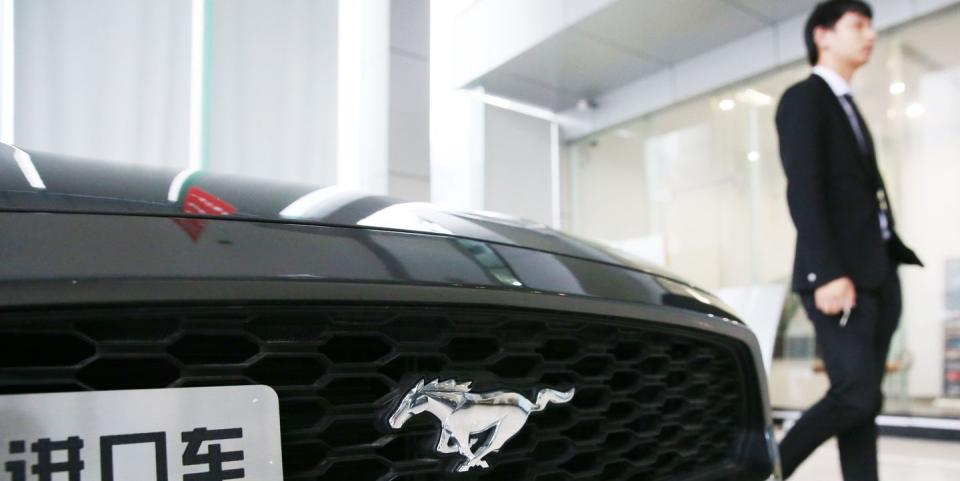China Cuts Tariff to 15 Percent on Cars Imported from United States

China announced today that it will cut tariffs on cars imported from the United States to 15 percent. It's a gesture that may start righting the trade imbalance between the two countries, an issue that is one of the cornerstones of the current U.S. president's international-relations policy.
The cut is temporary; it will last for three months and takes effect January 1, according to the Reuters news service's review of the announcement from the Chinese finance ministry. The country in May said it intended to cut its auto import tariffs to 15 percent by July; it withdrew that promise in June when President Trump directed 25 percent U.S. tariffs on $50 billion worth of Chinese imports. Instead, China increased the tariff on U.S. autos to 40 percent. Previously, China had been slapping 25 percent tariffs on all imported cars, compared to the 2.5 percent duty charged by the U.S. on imports.
But Trump's tariffs included imports of China-built cars from the U.S. auto companies, including the Buick Envision and the Cadillac CT6 plug-in hybrid. Soon after the announcement, Ford said it was dropping the Focus Active, the next-gen Focus that was to be exported globally from China, from its upcoming U.S. lineup. Also in June, the U.S. set 10 percent tariffs on $200 billion in China-made goods and threatened to tag $200 billion more, although so far, those additional tariffs have not been imposed. While Trump agreed to suspend its planned 15 percent tariff increase on the original $200 billion in goods (to a total of 25 percent by January 1) as part of recent trade talks in Argentina with Chinese president Xi Jinping, the U.S. government has not announced plans to cut tariffs on Chinese vehicles imported to the United States.
Joe Hinrichs, Ford's President of the Americas-who previously criticized Trump’s steel tariffs using the tenuous claim that they cost the automaker a billion dollars in profit this year-said that he is "very encouraged" by the new announcement of the tariff reduction. "We applaud both governments for working together constructively to reduce trade barriers and open markets," he said.
Other automakers that export from the United States, such as BMW, could save hundreds of millions from the reduced tariffs. Tesla said it is cutting prices on Model S and X vehicles in China.
Chinese tariffs and a 17 percent value-added tax (VAT) are major reasons why foreign-made cars remain prohibitively expensive in China. A BMW M3 costs the equivalent of $150,000. A base Range Rover lists at more than $230,000. As a result, in a market that can absorb more than 25 million cars a year, China imports a tiny fraction of foreign-built cars. In 2017, the Chinese government said it imported just over 280,000 U.S.-built cars. According to the U.S. Census Bureau, the total U.S. trade deficit with China through October this year was more than $344 billion.
('You Might Also Like',)

 Yahoo Finance
Yahoo Finance 